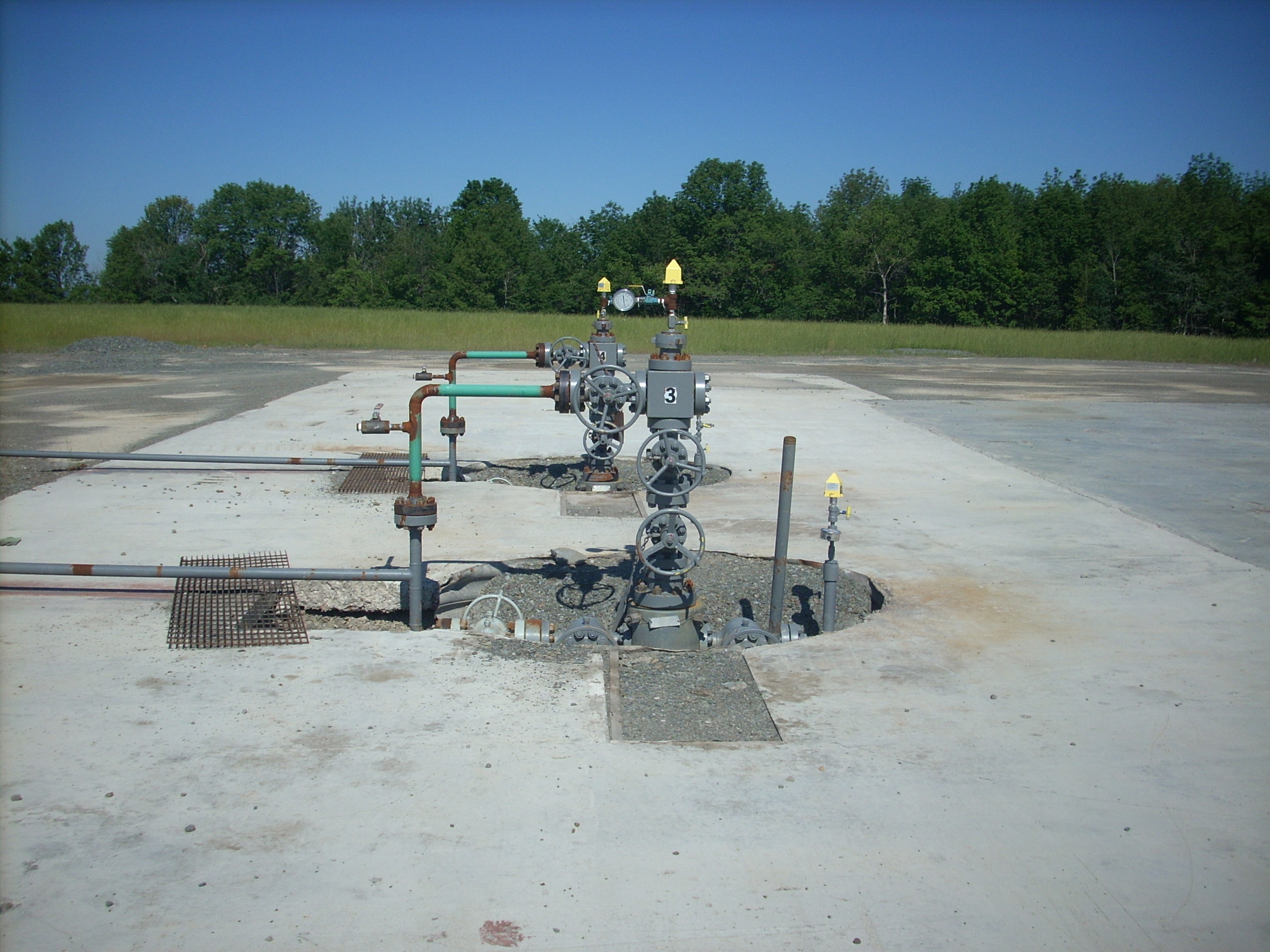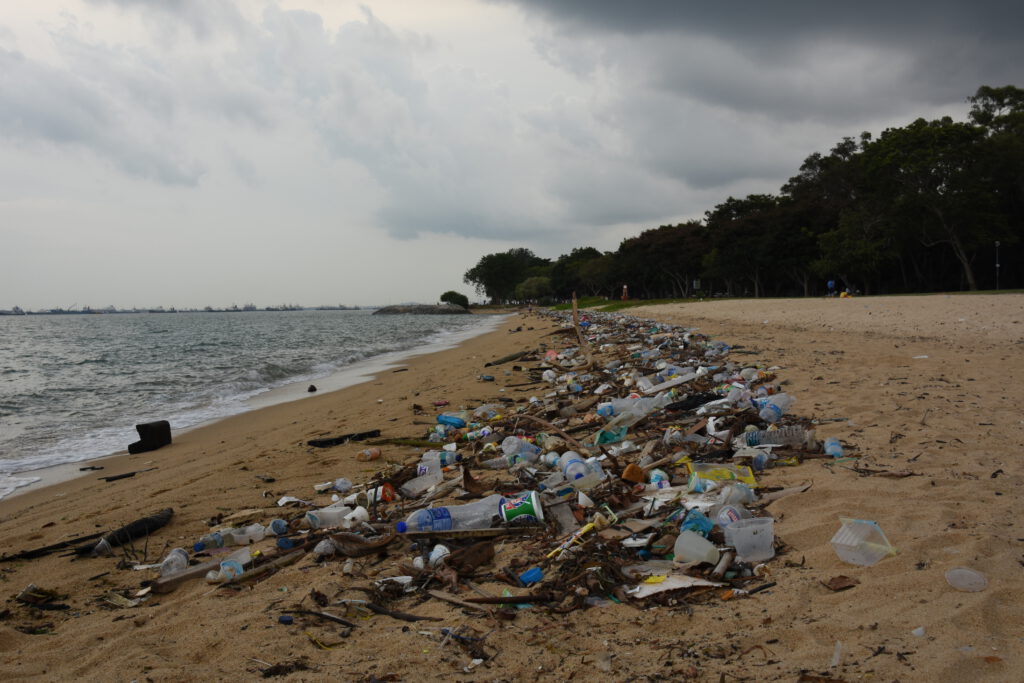Diane M. Sicotte, Ph.D.
Drexel University Department of Sociology
[email protected]
The current worldwide boom in natural gas extraction is due to the new hydrofracturing (fracking) method, even though there is ample scientific evidence that fracking creates extreme risks to human and ecosystem health.[1] The production of plastics and the proliferation of plastic waste poses risks just as great.[2] While many know of the harms from fracking and plastics production, few know that there is a mutually reinforcing relationship between fracking and plastics.
The non-governmental organization Food and Water Watch was the first to focus on this issue. It published an issue brief exposing the connection between fracking and plastics production in May 2017. Although the connection between fracking and plastics has not received much attention from mass media, a few news stories appeared in fall 2017 about the new gas liquid export route connecting the gasfields of Pennsylvania with petrochemical complexes in Scotland, and stories appeared in both the scientific press and the business press about how fracking was reviving the plastics industry (see here, here and here)
The economics of the fracking-plastics connection are as simple as the environmental implications are troubling. When a well is fracked, the substance gathered is “wet” (or crude) gas, which contains the gas liquids butane, ethane and propane. Gas liquids are separated out in a natural gas processing facility (fractionater); the purified “dry” gas is sold as a fuel, while gas liquids are sold to petrochemical industries as feedstocks for the manufacture of plastics and many other substances. The Marcellus Shale formation in the Northeast U.S. is particularly rich in ethane, the gas liquid that has become the principal building block for polymers. Currently, about 40% of U.S. natural gas comes from the Marcellus Shale, producing a high volume of ethane that is being sold at low prices. Raw materials make up 60-70% of the cost of plastics manufacturing, so low-cost ethane is increasing the profitability of plastics manufacturing. And of course, if plastics are increasingly profitable, that is an incentive to produce more and more.
In addition to making plastics manufacturers richer, natural gas liquids produced cheaply through fracking serve a second economic purpose: they allow the profit margins from fracking to remain acceptable to gas corporations even in the face of gas overproduction and low gas prices.
Each step in the fracking-plastics production chain threatens the health and safety of people and ecosystems. For just one well, fracking uses 5-12 million gallons of water, which flows back from the well as “produced water.” Produced water contains toxic chemicals added to force open the fissures in the rock created by the drill, together with naturally occurring toxic substances such as arsenic, cadmium and radioactive isotopes. This wastewater is too toxic to treat at a water treatment facility, so much of it is disposed of by injecting it underground. In Oklahoma and other states in the U.S., underground injection of wastewater has destabilized rock formations, causing swarms of earthquakes. Many wells in fracking communities have become so polluted with chemicals, natural gas and gas liquids that they became flammable. Fracking also generates clouds of toxic air pollution, which threaten the health of people living near wellpads. Methane leaks at the wellhead, from gas flaring (burning off waste gas) and from every type of pipeline transporting natural gas. Anyone concerned about climate change should be alarmed at these releases of methane, as methane’s short-term warming potential is 86 times that of carbon dioxide.
In the U.S., the number of gas refineries, petrochemical plants producing plastics, and liquefaction plants that prepare gas and gas liquids for export are all increasing. All of these pose serious health and safety risks to surrounding communities, many of which (in the U.S.) are made up of poor people of color, the group whose health is the most vulnerable to toxic air emissions or accidental fires, spills or releases.[3]
In 2017, China was the world’s top plastics producer, with 11.88% of the world’s plastic goods made there. That year, China received 10.5% of all gas liquids exported from the U.S. The U.S. ranked third in plastics production (with Germany second at 10.7%), producing 10.34% of the world’s plastic goods from domestically-produced gas liquids. See here.

World plastic production has been steadily increasing from 204 megatons in 2000 to 335 megatons in 2016.[4] About 39% of all plastic produced is used for packaging, materials that are non-durable and meant to be quickly discarded. The fate of plastic products after they are discarded is a growing concern to the global scientific community. Plastic recycling rates have always been low because, unlike paper, glass and metal, recycled plastics cannot be easily refashioned into products of equivalent quality. Of the 8300 million metric tons of plastic produced in the world since 1950, scientists estimate that only 9% was recycled; 12% was incinerated, and the vast majority (79%) has accumulated in the natural environment or landfills.[5] Four wealthy countries (the US, Japan, Germany and the UK) are the leading exporters of plastic waste. Most of the world’s plastic waste ends up in China, Indonesia, Thailand or the Philippines where much of it is dumped on land, in rivers or in the ocean. This “distancing” of plastic wastes from wealthy nations to poorer nations disproportionately impacts the health of some of the world’s poorest people, while making it appear to residents of wealthy countries that plastics are being successfully recycled.
In the ocean, plastic materials degrade into microplastics, which are consumed by seafood, putting the toxic materials in plastics into the web of foods that are consumed by people. Some of the substances in plastics have been classified as endocrine-disrupting chemicals, which at very low doses mimic the effects of estrogen in the body. Endocrine disruption can cause health problems such as insulin resistance, obesity, decreased male fertility, reproductive cancers, and neurobehavioral problems.[6] Testing of randomly chosen U.S. residents by the Centers for Disease Control has shown that phthalates (chemicals added to plastics to make them flexible) are present in the bodies of 95% of the U.S. population.[7] If production and waste management of plastics stays the same, 12,000 million megatons of plastic waste will be in the environment or landfilled by 2050.
The plastics problem could be solved very quickly if binding international agreements were enacted, placing strict limits on how much plastic could be produced by each nation. But even without such an agreement, more could be done to break up the toxic relationship between fracking and the manufacture of plastics. Take-back laws that force plastics manufacturers to take back their products after their useful life are already in place in Europe for other products, and could be extended to plastics. Due to the toxic ingredients that make up plastics, the U.S. government could classify plastic waste as hazardous waste rather than solid waste. This would result in tighter regulation of plastics production, more careful procedures for recycling and disposal, and the cleanup of habitats polluted by plastic could be paid for under the Superfund program. And the United States could enact legislations similar to the European Registration, Evaluation, Authorization and Restriction of Chemicals (REACH). Having REACH in effect means that in Europe, the toxicity of chemicals must be evaluated before they are put into the environment. In the United States, chemicals are innocent until proven guilty by the government or those who were harmed. And if the U.S. ratified the Basil Convention Ban on the trans-boundary shipment of hazardous waste (provided that plastics were re-classified as hazardous waste), the deluge of plastics in U.S. landfills and incinerators would stimulate protest against the production of wasteful plastic items.
But even without these important changes, people everywhere in the world are fighting back against fracking and the toxic tide of plastic waste. Thousands of people have taken part in anti-fracking demonstrations. By popular demand, towns such as Beverly Hills, California and Ithaca, New York have banned fracking, as have the states of Maryland, New Jersey, New York and Vermont. Fracking bans have been enacted in Bulgaria, France, Germany, Ireland, Romania and Scotland, and in New Brunswick, Canada.
Protest against the problem of plastic waste has generally focused on a few items, such as plastic straws, plastic microbeads added to cosmetics, and single-use plastic bags. In the U.S., the Microbead Free Waters Act was passed in 2015, banning cosmetics manufacturers from adding microbeads to their products. Plastics corporations have fought fiercely against retailer fees for plastic bags or outright bans on them. But they are losing the battle as California and all counties in Hawaii have joined Kenya, Somalia and many European countries in banning or charging customers for single-use plastic shopping bags. Municipal bans on plastic bags are even more popular in U.S. and Canadian cities. The oil, gas and plastics industries will keep fighting for their right to produce as much toxic plastic as they can. But they will find it increasingly hard to continue as more and more people come to recognize the dangers of the fracking-plastics connection.
[1] McDermott-Levy, R., Kaktins, N. and Sattler, B., 2013. Fracking, the environment, and health. AJN The American Journal of Nursing, 113(6), pp.45-51.
[2] Jambeck, J.R., Geyer, R., Wilcox, C., Siegler, T.R., Perryman, M., Andrady, A., Narayan, R. and Law, K.L., 2015. Plastic waste inputs from land into the ocean. Science, 347(6223), pp.768-771.
[3] Wright, B., 2003. Race, politics and pollution: Environmental justice in the Mississippi River chemical corridor. Just sustainabilities: Development in an unequal world, pp.125-145.
[4] Plastics Europe: The Facts (2013, 2016, 2017).
[5] Jambeck, J.R., Geyer, R., Wilcox, C., Siegler, T.R., Perryman, M., Andrady, A., Narayan, R. and Law, K.L., 2015. Plastic waste inputs from land into the ocean. Science, 347(6223), pp.768-771.
[6] Carbery, M., O’Connor, W. and Palanisami, T., 2018. Trophic transfer of microplastics and mixed contaminants in the marine food web and implications for human health. Environment international, 115: 400-409.
[7] Zota, A.R., Phillips, C.A. and Mitro, S.D., 2016. Recent fast food consumption and bisphenol A and phthalates exposures among the US population in NHANES, 2003–2010. Environmental health perspectives, 124(10), p.1521.
